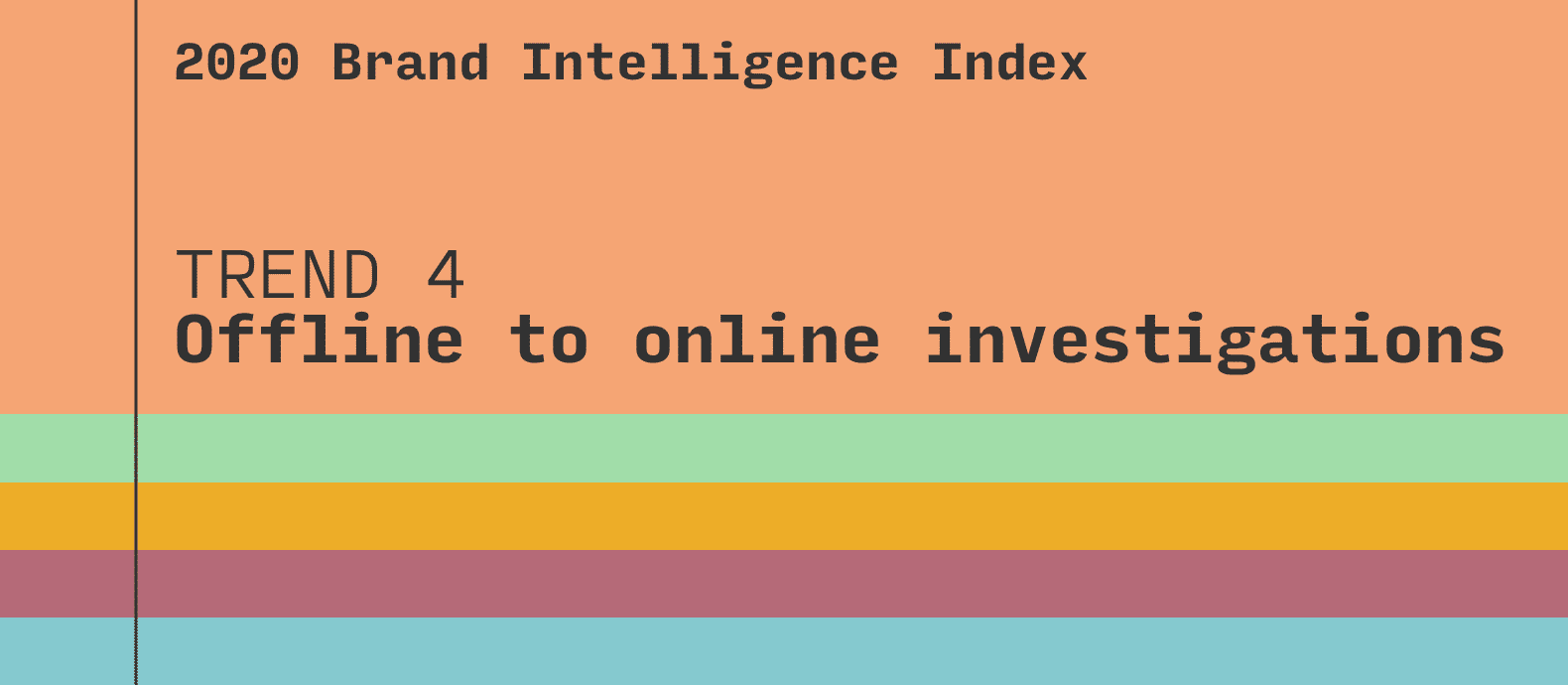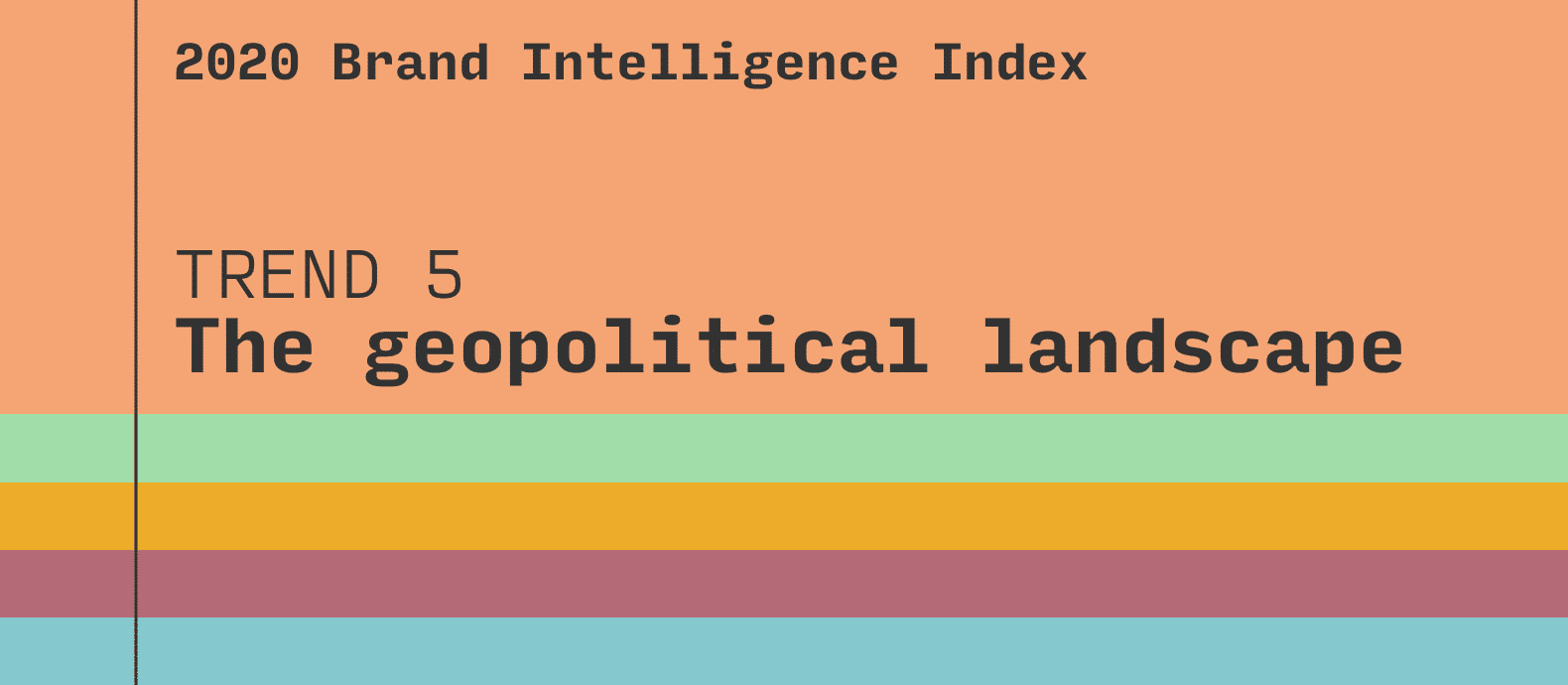People have been making counterfeit goods for hundreds of years, and that’s no different today. Anti-counterfeiting investigations evolve but the problem is still the same: how to stop counterfeit operations quickly and effectively.
In this article, we’ll talk about what brands are doing today to fight sophisticated counterfeit operations—offline and offline.
Summary:
- Large-scale counterfeit networks continually become more advanced
- Offline counterfeit investigations lay the foundation
- Online anti-counterfeiting investigations meet the challenge
As part of our Brand Intelligence Index, we surveyed a number of industry experts on current intellectual property issues. Looking at the results, 44% of experts said large-scale counterfeit networks erode brand value more than other threats like gray market selling or social media platforms.
Check out other IP trends from the Brand Intelligence Index:
- Trend 1: Counterfeit Dispersion
- Trend 2: Beyond the Black Market
- Trend 3: Transformations in Tech
- Trend 5: Geopolitical Landscape
Large-scale counterfeit networks become more advanced
If you haven’t heard of the decentralized network of super-fast factories in China dubbed the “mountain stronghold,” it might just blow your mind. The Chinese term “shanzhai” means “mountain stronghold” and it refers to tens of thousands of companies in Shenzhen that share product designs and component lists with one another like open-source software.
This huge manufacturing community values scrappy resourcefulness and has become stronger over the years—it now competes in the global market against modern tech giants. Sometimes, the no-name products it produces are private labeled by western brands and sold as their own.
At other times, “mountain stronghold” companies create replicas of name-brand products and pass them off to counterfeit sellers. These factories are nimble. A particular product might be made in one factory for one day and a different factory the next.
Products travel from factories to distributors on a counterfeit supply chain and end up on social media listings, e-commerce sites, and in physical shops. Distributors and sellers have a similar attitude as the factories: infringing goods are only a problem if they get caught or receive cease and desist letters. To them, they are just satisfying the demand for cheaper items that function (or seem to function) like name brand products.
Like the factories, many different sellers can be working together in complex relationships. One network uncovered in 2010 was made of 130 Chinese sites selling products on 6,500 individual domains. The advance of technology has helped these counterfeit operations grow and stay hidden.
Offline counterfeit investigations
According to OECD, fakes account for 3.3% of world trade and footwear and clothing accounted for 38% of civil seizures in 2016. Internal Red Points data also shows that corporate and sporting goods are hotbeds of counterfeit merchandise. If a product is popular, it’s in danger of being faked. The problem is there, and offline counterfeit investigations can still aid in the solution.
Offline investigation techniques include:
- Private investigators posing as customers to purchase counterfeit goods
- Law enforcement agencies conducting undercover purchases
- Issuing court orders to support enforcement efforts
However, offline practices are slow. With so many data points to monitor in today’s digital world, it’s harder and harder for teams to manually research counterfeit products and enforce rights.
How online anti-counterfeiting investigations meet the challenge
When anti-counterfeiting investigations go online, their efficiency skyrockets. Online investigations can use clustering technology to uncover the identities lurking behind counterfeit listings. Instead of manually searching through dozens of e-commerce sites for keywords, robots can do that work at light speed. And robots can also recognize when an image contains text—many counterfeit sellers overlay text onto an image to avoid detection.
Reveal the cluster
With clustering technology, brands can peel back the surface and see who’s really behind a counterfeit network.
Today’s online marketplace is basically a giant masquerade. Most websites are on a level playing field in the eyes of consumers. Legitimate brands use trust signals like guarantees, reviews, and professional affiliations to get customers. But if counterfeiters can fake a physical product, they can fake trust signals, too.
As we mentioned before, counterfeit networks can be huge. One counterfeit cluster could have hundreds of tendrils reaching out to consumers. Clustering technology uses AI to investigate each touchpoint and trace it back to its source.
This technique can reveal the true size of a counterfeit cluster. That’s important to know. If you begin to enforce on one part of a cluster, the particular sellers that you shut down can just migrate to other channels.
They might close one web domain and open another one, they might just swap products for a slightly different variation, or they might create new social media profiles to get around investigators. A more effective strategy is to analyze the entire cluster and enforce multiple channels at the same time. Of course, this requires digital resources capable of the task.
Another great thing about clustering technology is that it can reveal the identities of the players involved. We’re not talking about emails or screen names, but real-world identities. That can come in handy if you need to take action beyond the screen and pursue a legal battle.
Let robots do the searching
Automation already touches every aspect of our 21st-century lives. There’s no reason to plunk away at a computer screen looking at listing after listing when robots can scan thousands in the same amount of time.
Bot-powered search is a core ingredient of modern anti-counterfeiting investigations. Using this technique, a legal team can get an overview of how popular a brand is with counterfeiters and then focus on high-priority tasks first.
Let robots do the seeing
Sometimes, counterfeit sellers don’t use branded keywords in the product listing. Or, the listing may be on Instagram or TikTok without any text at all. Instead, they will put information like the product’s title and price inside a photo by overlaying text.
e’re all familiar with internet captchas. Apparently, deciphering wiggly letters from a fuzzy background is the ultimate test for whether a user is a robot or not. But artificial intelligence has come a long way even in the last few years.
For example, Google Lens is a program that analyzes images and then recognizes objects and text. Just for fun, I ran a couple of tests with it. I was using the application on my phone and had it view images on my computer screen. First, it was able to pick out the text from a meme instantaneously. Then, I tested it on a handwritten note on the screen and it got about 90% of the words right. That’s pretty awesome. Finally, I pointed Google Lens at my dog and it correctly identified its breed (not exactly relevant but still exciting).
Technology like this can be used to scan suspicious listing images and flag ones that contain certain keywords, like a particular brand or a price. This technology overlaps image recognition, but it takes it to another level. Words on an image, especially handwritten words, can be hard for a computer program to recognize. But with the way that AI is advancing, machine vision will continue to get better and better.






